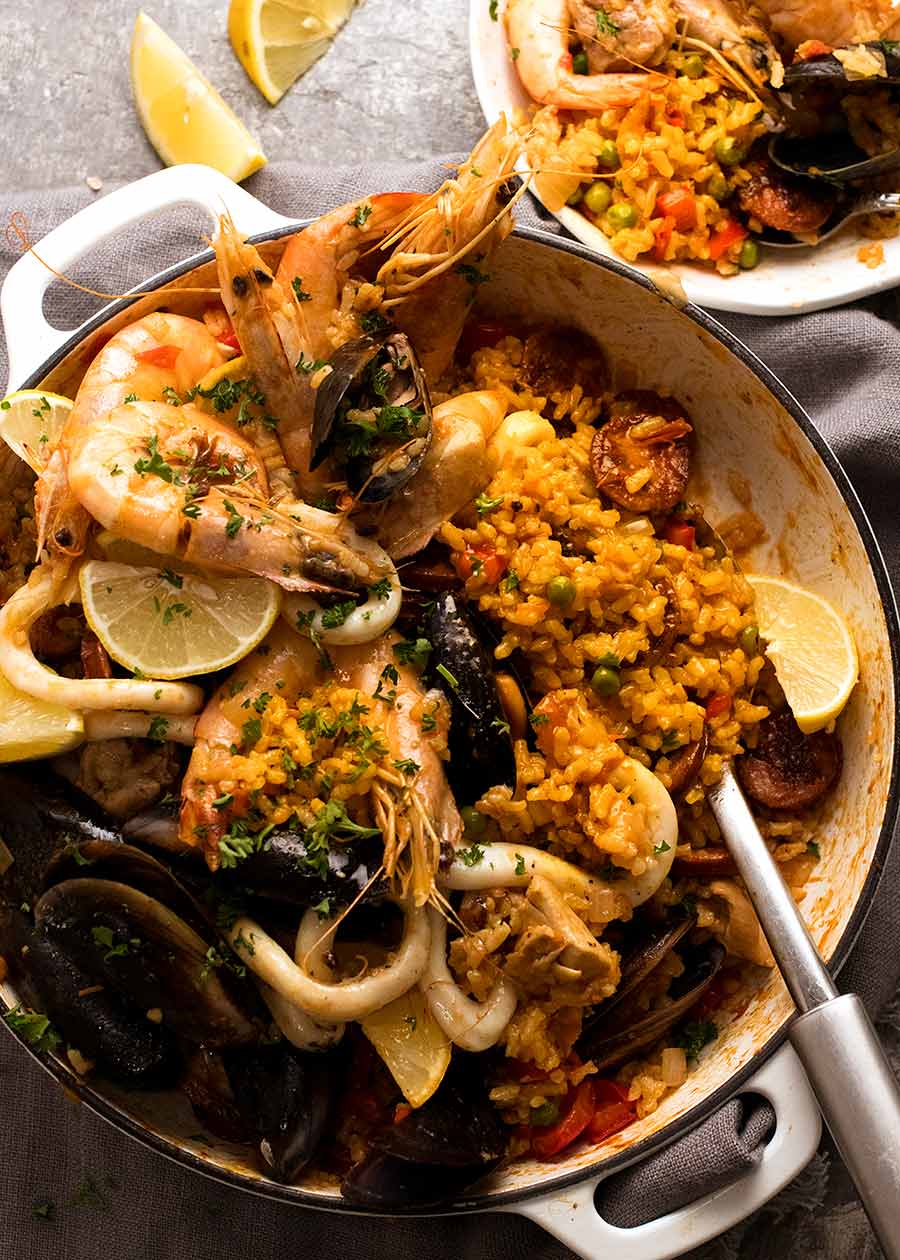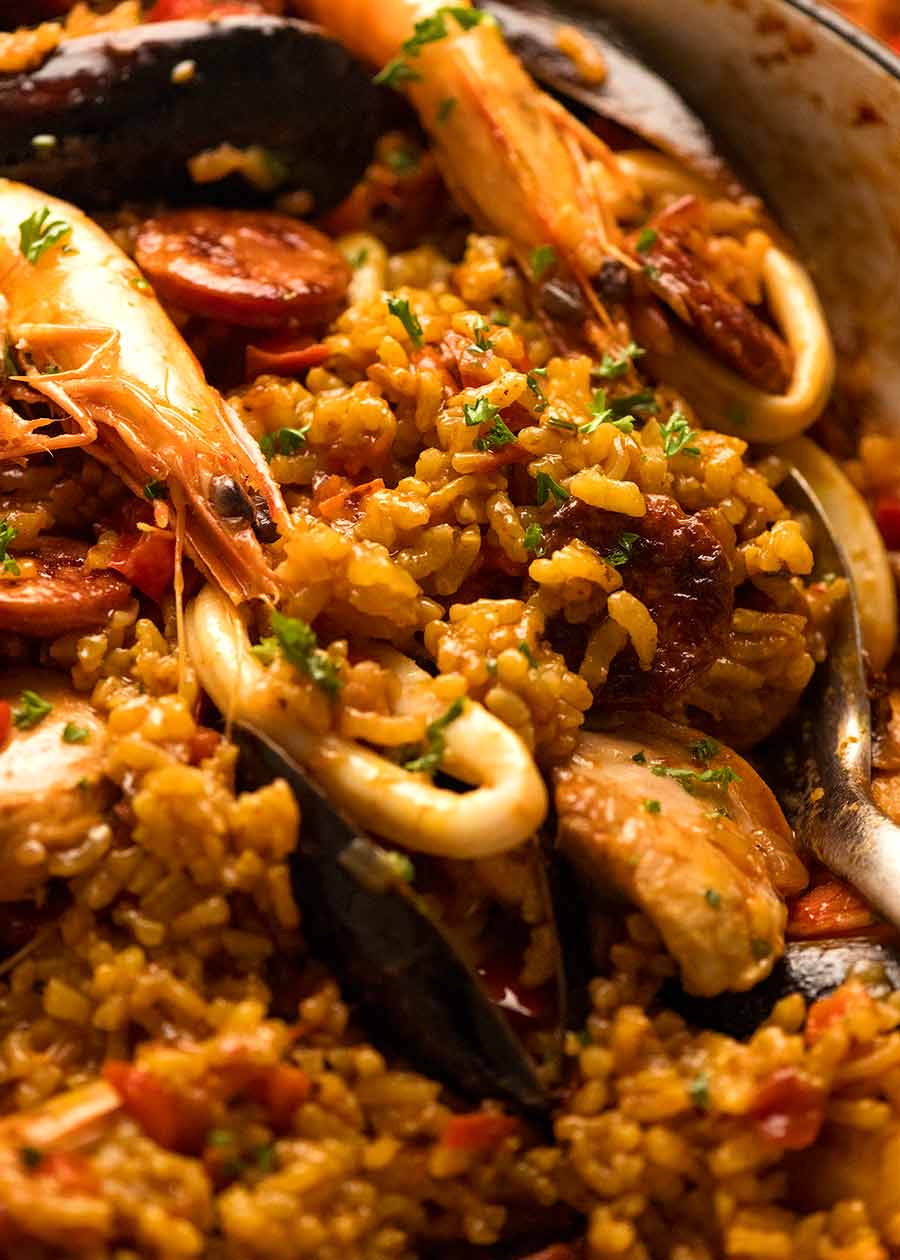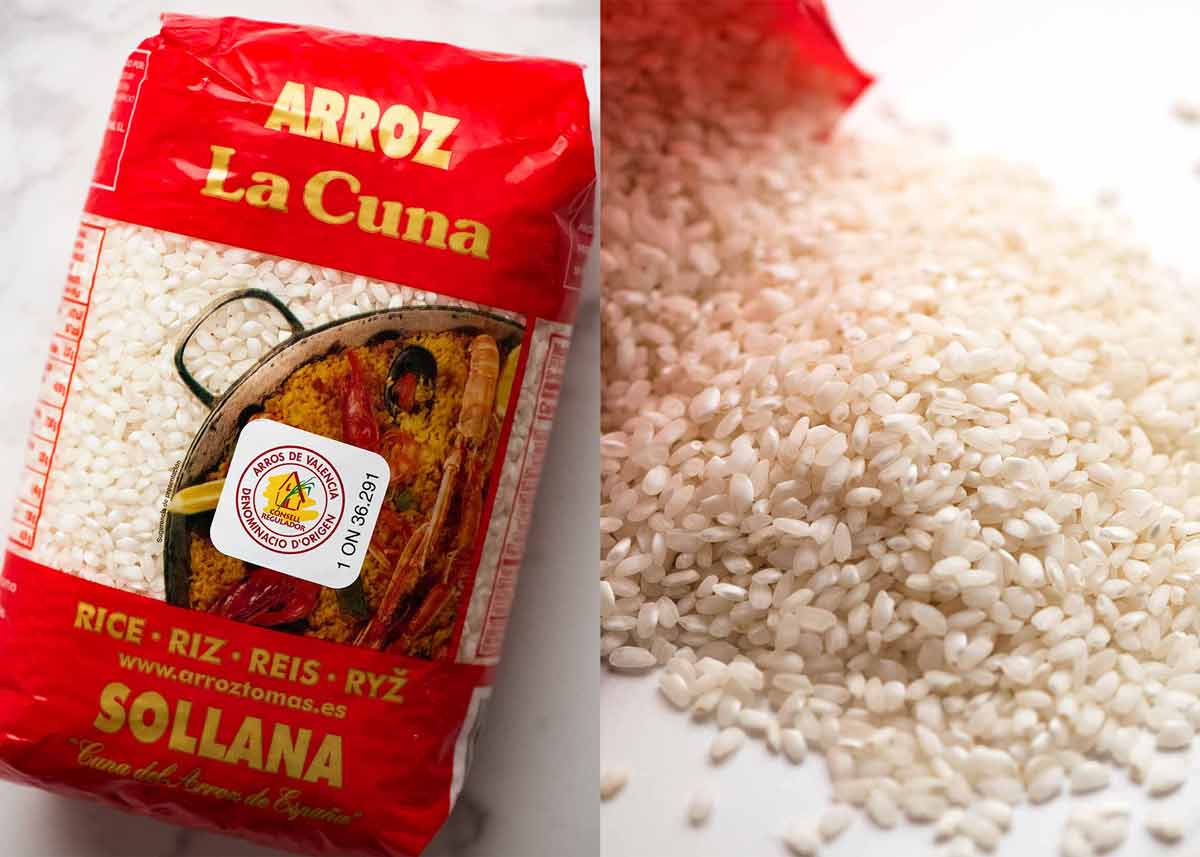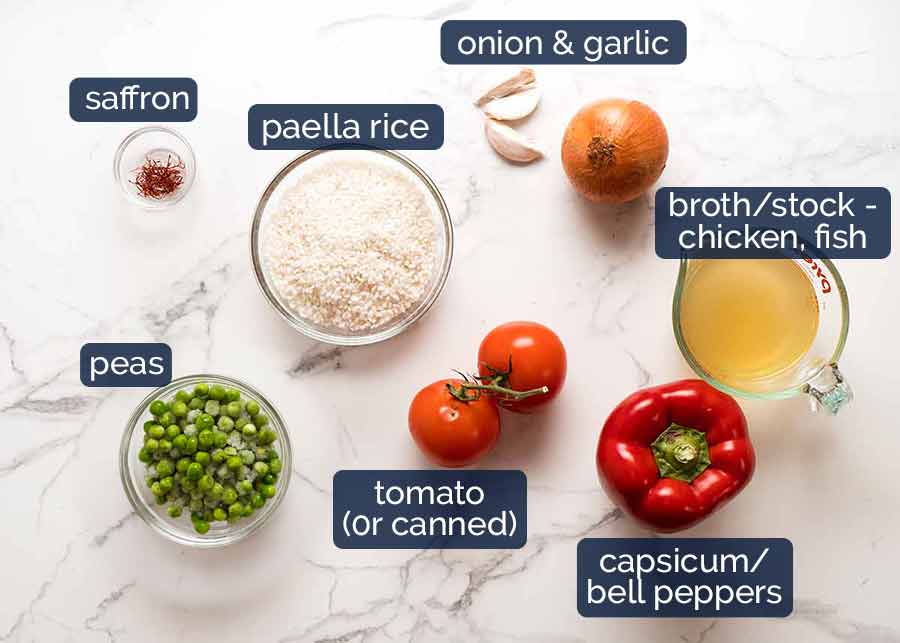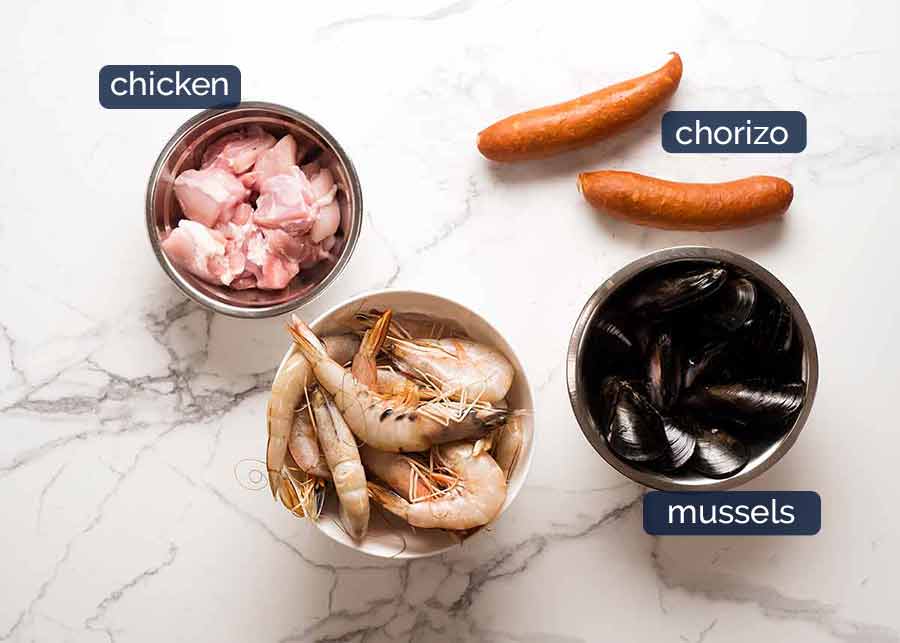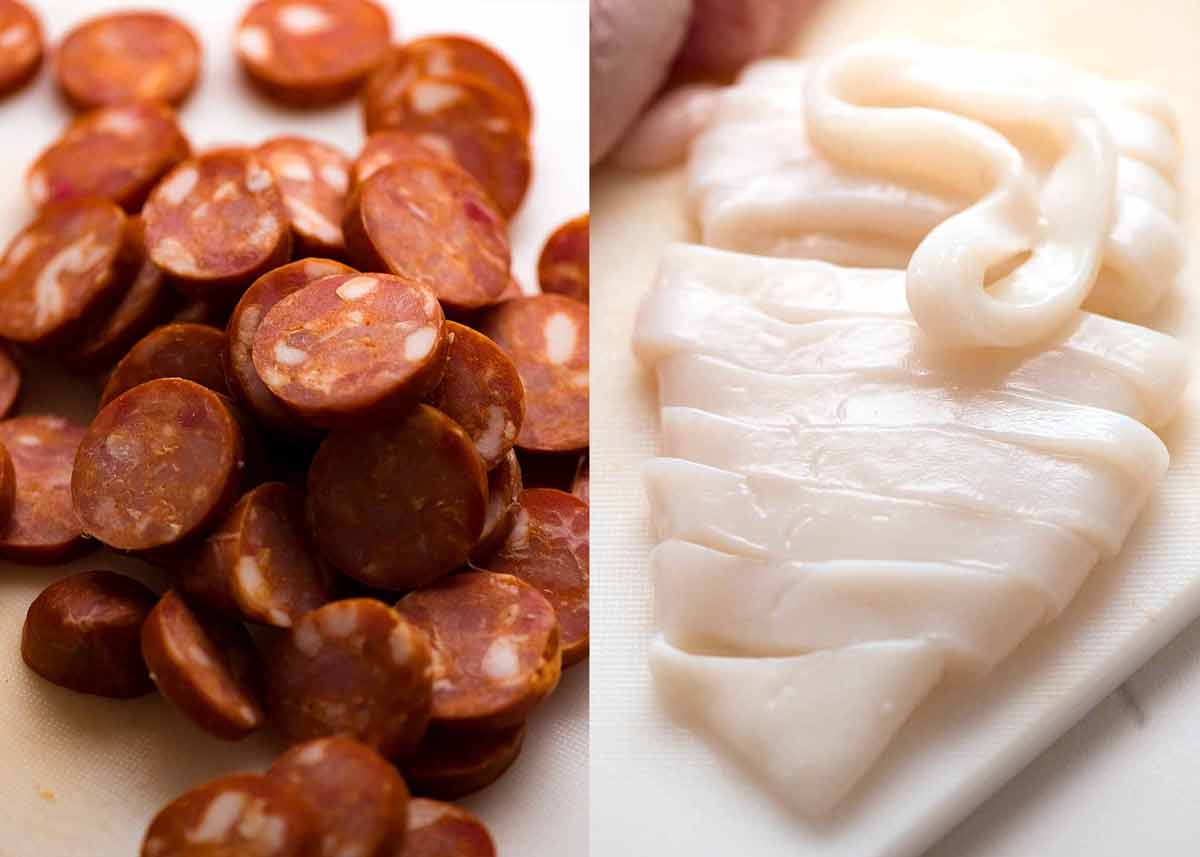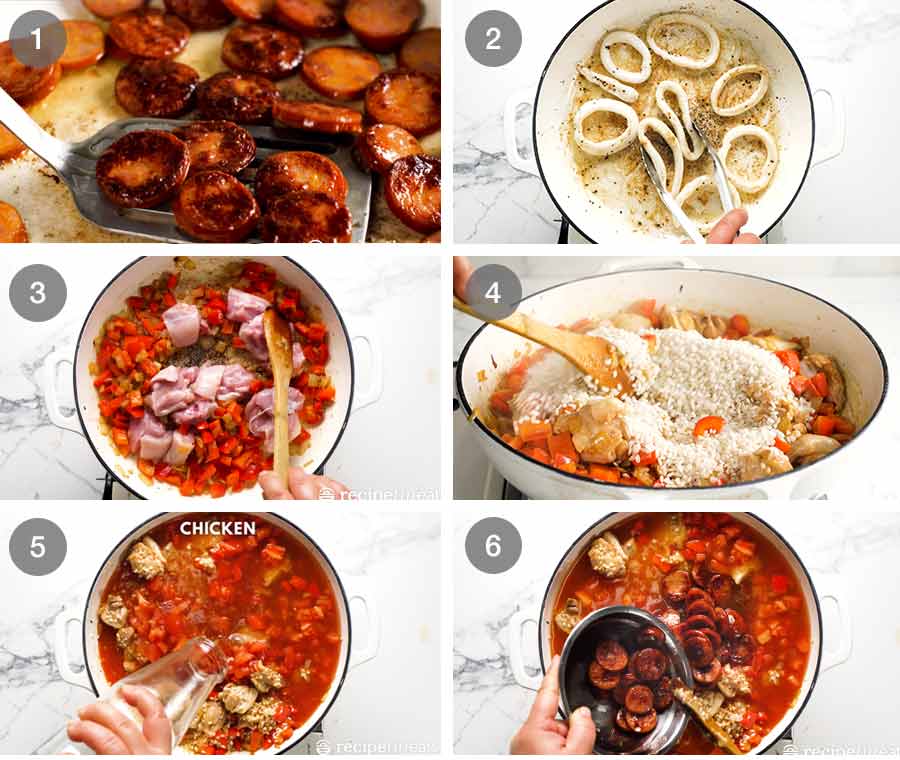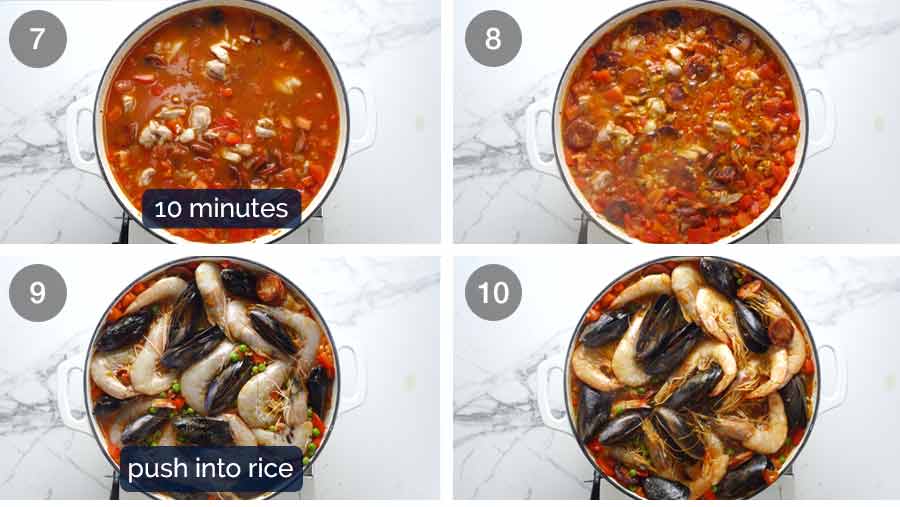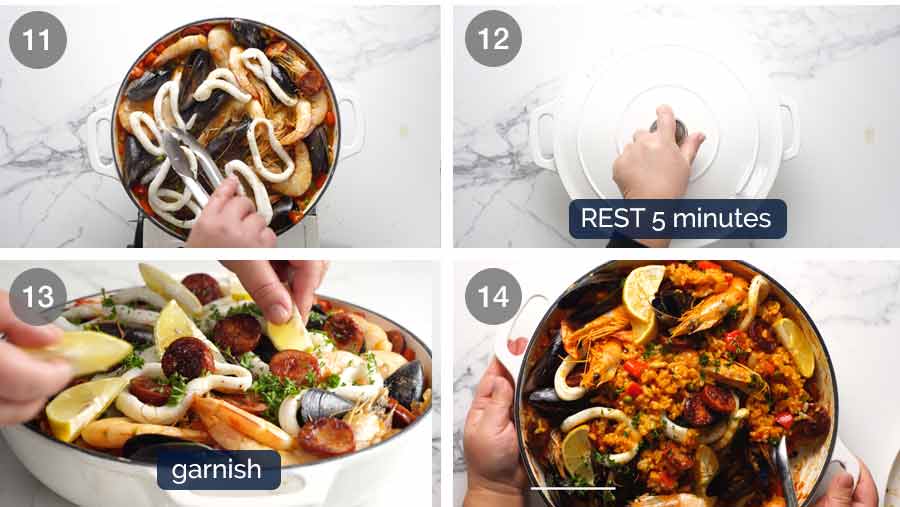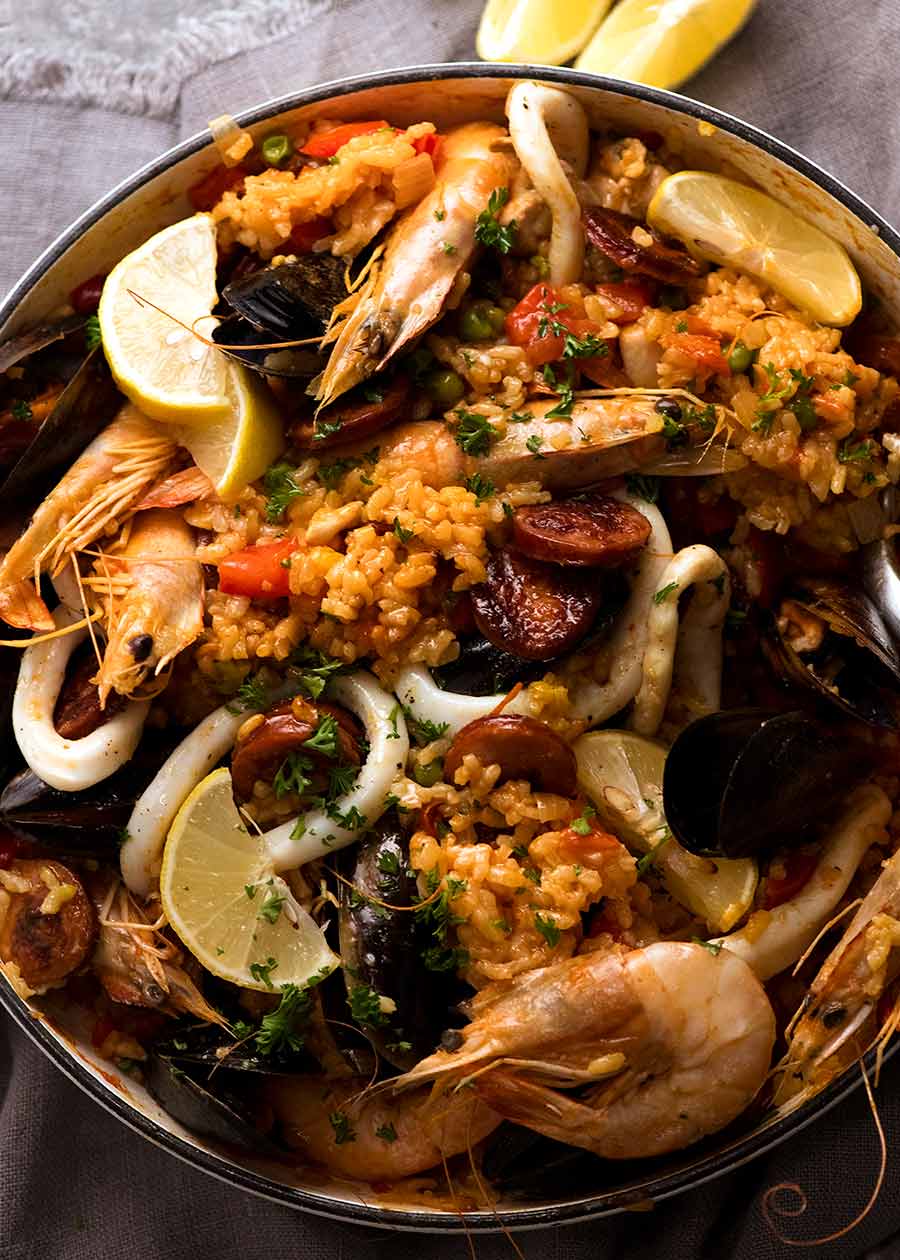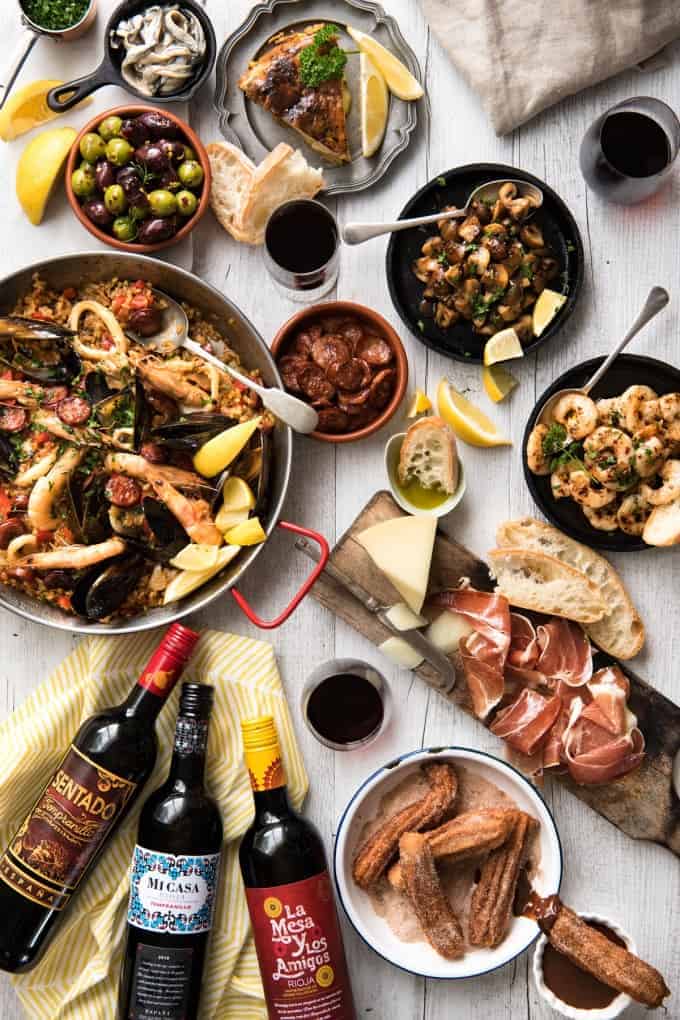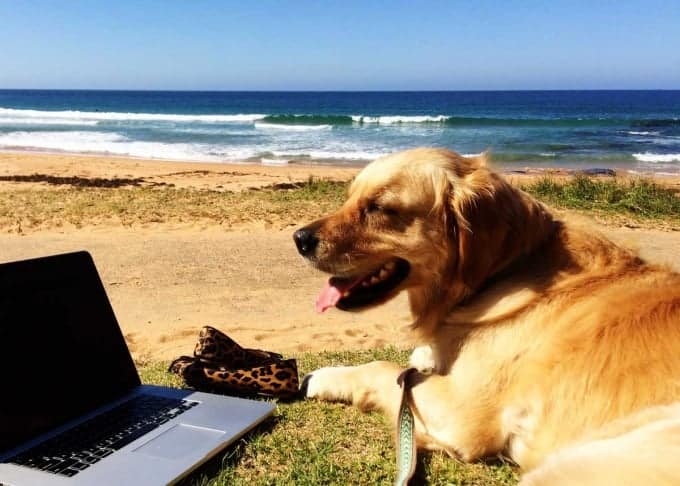Terrific festive party food!
Paella recipe
If you’ve always wanted to but been too afraid to try Paella, I can assure you – there is no reason to be scared! If you approach it the right way – and I like to keep my recipes as risk free as possible – you will end up with rice that’s cooked exactly to your taste in a saffron infused, flavour loaded sauce with all your seafood cooked to perfection. No overcooked seafood, and no mushy rice around here! The beauty of paella is that it is in fact extremely flexible. Don’t get too hung up about getting the exact seafood I use. Don’t listen to the authors who tell you that you MUST use homemade fish broth or buy extremely expensive seafood stock. I learnt Paella the Migeul Maestro* and Rick Stein way – as he wrote in his Mediterranean Escapes cookbook, Paella, whether it be for a quick midweek meal or a large festive gathering, is meant to be relaxed and fun, not stressful with strict rules. So just chill out!! 😉
- Miguel Maestro is Australia’s most well known Spanish Chef.
I say this is a straightforward recipe but I AM going to spend a bit more time on explaining steps and process visuals than I usually do (short recipe video extremely helpful for first timers) because I’m guessing paella is a bit of a special occasion dish for many and I want to ensure you nail it! (And you will, I promise – if you follow my steps!)
Best rice to use for paella
The best rice to use for paella is Spanish rice labelled as:
Bomba Rice – or arroz bomba (“arroz” means rice in Spanish); Valencia rice or Arroz de Valencia (pictured below) – the other common name for Bomba Rice; or Calasparra Rice -or Arroz Calasparra.
Paella rice packets tend to be very helpful providing clues such as pictures of Paella or “perfect for paella!” splashed across it. 🙂 Where to find paella rice – here in Australia, paella rice is sold at most Woolworths and Harris Farms, some Coles, delis, Spanish or Mediterranean delis (some Italian ones too), or gourmet stores. See below for best subs using more common rice.
Paella rice is a short grain variety of rice (ie it is short in length, distinctly different from basmati which is very long). The unique quality of paella rice is that it absorbs more liquid than other types of rice without getting bloated and mushy, making it ideal for a dish like paella where you want the rice to absorb loads of flavour. Best substitute for paella rice is risotto rice (arborio rice) which has similar characteristics ie. ability to absorb lots of liquid, except risotto goes creamy if you stir it. The next best is medium grain rice – the same rice I use for rice pudding. I do not recommend using: brown rice, long grain white rice, black rice, wild rice or any other fancy type of rice. And in anticipation of someone asking – NO to quinoa!!! (A million Spaniards almost fainted at the thought).
What goes into Paella
I divide the stuff that goes into Paella into 2 groups:
1. The Base Ingredients
Paella rice – as discussed above. Buy anything labelled as Bomba, Valencia, de Valencia or Calasparra – or simply “paella rice”! Saffron – a signature part of paella is the warm yellow tinge of the rice and delicate saffron flavour. Saffron is expensive, even more expensive than gold by weight! So if your budget won’t stretch to real saffron threads, use a pinch of saffron powder (it’s artificial but will provide the same colour hit and some flavour – but don’t worry, we have tons of other flavour in this paella!); Stock/broth – just store bought chicken stock is fine here, we are going to get tons of seafood stock from the seafood we use. If you’re in Australia and insist on using fish or seafood stock, get the good stuff from gourmet or fish shops, do not buy supermarket cartons (they are quite nasty). US reads: I can highly recommend clam juice as an option if you want extra seafood flavour; Garlic and onion – essential flavour base; Tomato – fresh tomato is the traditional method but if you can’t get good juicy fresh tomato (as I couldn’t when I filmed the video), use canned instead; Capsicum/bell peppers – also adds to the flavour base, I really recommend using it; and Peas – optional, I like that it adds a splash of colour in an otherwise very red/yellow dish!
2. The Add Ins
And here are the proteins I put in the paella – chicken, chorizo*, calamari, prawns/shrimp, mussels. A very classic, popular combination.
- 45 million Spaniards just threw up their hands in protest at the inclusion of Chorizo, declaring it’s not traditional! But outside of Spain, it’s considered a key ingredient – and it adds a ton of flavour to the dish. 25 million Aussies would throw up their hands in protest if I left it out! So it’s in. 🙂
Forgot to include calamari in the above photo! if you don’t find rings, buy a squid tube then slice it – as pictured below.
How to make paella
Here’s how to make paella in 4 simple steps:
Part 1 – sear, make flavour base, add rice and stock
This part is pretty straightforward. The only key tip here is to only cook the squid/calamari for 90 seconds – squid cooks super fast and goes rubbery quite quickly! You don’t need a paella pan. Any large skillet will work fine – or even a wide pot. In fact, paella pans require more advanced cooking skills because the everyday paella pans tend to be quite thin which makes the rice very prone to burning unless you have a stove burner made especially for paella (they have wide rings that turn down pretty low). Note how we return some of the cooked chorizo back in to cook with the rice. It adds great flavour into the dish as well as salt.
Part 2 – cook rice, squidge in seafood
The rice is cooked uncovered – this is a distinct cooking technique for paella compared to other iconic rice dishes of the world like Jambalaya and Biryani. Initially, we cook the rice for just 10 minutes – at this stage, it will be partially cooked though it will seem to absorb most of the liquid. But wait! There’s more liquid to come! We add the prawns and mussels partway through cooking the rice because they cook faster. So the idea here is that the prawns, mussels and rice all finish cooking at the same time. If the seafood was added with the rice, they would overcook. Nobody wants rubbery prawns in their paella! The prawns and mussels (especially the mussels) leech an astonishing amount of liquid as they cook – around 3/4 of a cup. Not only does this provide the extra liquid required to finish cooking the rice, it’s essentially our very own homemade seafood stock that adds a load of incredible flavour into our paella!
Part 3 – garnish and rest!
The home stretch! After 8 minutes, the prawns will be perfectly cooked and the mussels will be open so you know they’re cooked. You will need to taste the rice to ensure it’s perfectly cooked (I know, I know, what an inconvenience! 😉). And it will still be a bit liquidy which is exactly what you want – because now we’re going to cover and rest it off the heat, during which time the excess liquid will be absorbed, leaving you with a bit pot of juicy paella rice, ready for serving! Pop the cooked squid and reserved garnishing chorizo back on top before you cover it so the heat warms them through. And just prior to serving, add some wedges of lemon and a sprinkle of parsley for colour!
How to serve paella
It’s entirely up to you whether you take it to the table as it is with the seafood completely covering the rice, or whether you give it a bit of a mix so the seafood gets jumbled through the rice a bit. I tend to give it a bit of a mix to loosen the rice a bit, mix the flavour through a bit better and also disperse the seafood through. So I bring it to the table looking like this:
PAELLA COOKING TIPS
Answering your burning questions about making Paella. 😉 Allow for 1/3 cup / 60g of rice per person, plus around 150g / 5 oz of proteins and seafood. This is slightly on the generous side – but leftovers keep well, and nobody wants to be short!
What to serve with Paella
Back in 2016, in my pre recipe video days, I shared this Paella recipe as part of a 3 course Spanish Fiesta! So here are some suggestions to make a full Spanish Feast:
Easy Tapas Starters – garlic mushrooms, Spanish potato tortilla, and more! (No recipe video for these, being that they’re old recipes. If you want videos, put in a request in the comments section below!) This paella for the main Spanish CHURROS for dessert! Astonishingly straightforward to make – 20 minutes start to finish – and they also reheat extremely well which makes them great make ahead party food!
So. Much. Food. So, SO happy! – Nagi x
Watch how to make it
Note: recipe calls for chopped fresh tomatoes if you have find ripe juicy ones which I could not. Canned crushed tomato is the best substitute which is what I’ve used.
Originally published August 2016, updated July 2020 with a new video, and lots more process steps!
Life of Dozer
Discovered a new way to exercise Dozer – using a drone! It makes me tired just watching him 😂 Also so glad that food doesn’t move…. he’s very difficult to keep up with!
And from the original publication date: At Sydney’s beautiful Bilgola Beach, drooling over this Paella on my computer screen and waiting patiently for me to finish, hoping I’ll let him hit the surf. No such luck Dozer, no dogs allowed on this beach! No swim for you this morning. And no paella either! #HardLifeForDozer
